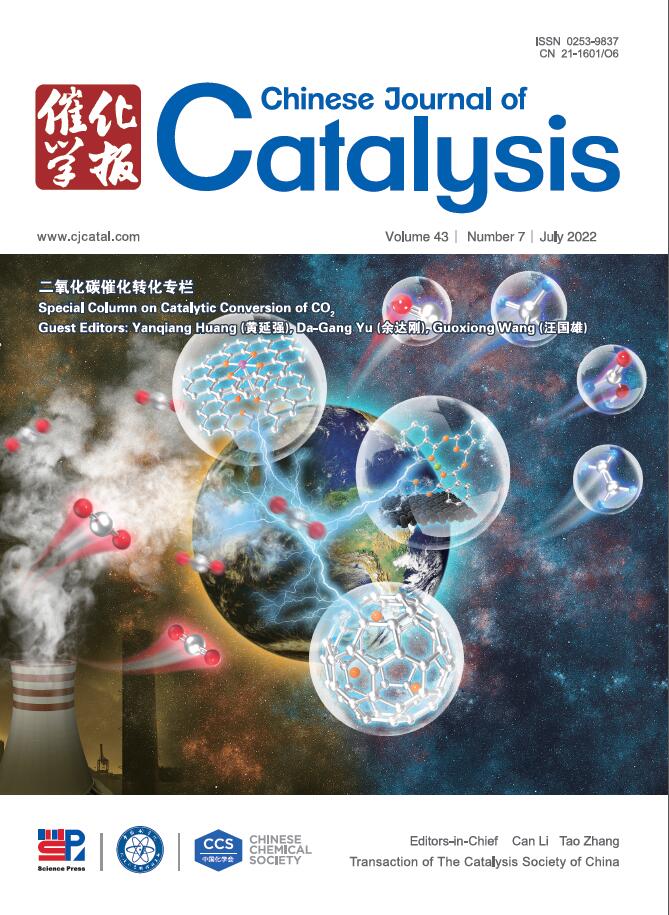Advances in humins formation mechanism, inhibition strategies, and value-added applications
IF 15.7
1区 化学
Q1 CHEMISTRY, APPLIED
引用次数: 0
Abstract
Humins, as a group of by-products formed through the condensation and coupling of fragment intermediates during lignocellulosic biomass refining, can cause numerous negative effects such as the wastage of carbon resources, clogging of reactor piping, deactivation of catalyst, and barriers to product separation. Elucidating the generation mechanism of humins, developing efficient inhibitors, and even utilizing them as a resource, both from the perspective of atom economy and safe production, constitutes a research endeavor replete with challenges and opportunities. Orbiting the critical issue of humins structure and its generation mechanism from cellulose and hemicellulose resources, the random condensation between intermediates such as 5-hydroxymethylfurfural, furfural, 2,5-dioxo-6-hydroxyhexanal, and 1,2,4-benzenetriol etc. were systematically summarized. Additionally, the presence of lignin in real biorefining processes further promotes the formation of a special type of humins known as “pseudo-lignin”. The influences of various factors, including raw materials, reaction temperature and time, acid-base environment, as well as solvent systems and catalysts, on the formation of humins were comprehensively analyzed. To minimize the formation of humins, the design of efficient solvent systems and catalysts is crucial. Furthermore, this review investigates the approaches to value-added applications of humins. The corresponding summary could provide guidance for the development of the humins chemistry.
腐植酸形成机理、抑制策略和增值应用方面的进展
Humins是木质纤维素生物质精制过程中通过裂解中间体缩合偶联形成的一组副产物,会造成碳资源浪费、反应器管道堵塞、催化剂失活、产品分离障碍等诸多负面影响。无论是从原子经济的角度还是从安全生产的角度,阐明人类蛋白的产生机制,开发有效的抑制剂,甚至将其作为一种资源加以利用,都是一项充满挑战和机遇的研究工作。围绕纤维素和半纤维素资源中人类碱的结构及其生成机理的关键问题,系统地综述了5-羟甲基糠醛、糠醛、2,5-二氧基-6-羟基己醛、1,2,4-苯三醇等中间体之间的随机缩合反应。此外,木质素在实际生物精炼过程中的存在进一步促进了一种称为“伪木质素”的特殊类型的人类物质的形成。综合分析了原料、反应温度和时间、酸碱环境、溶剂体系和催化剂等因素对人胺形成的影响。为了最大限度地减少人类的形成,有效的溶剂系统和催化剂的设计是至关重要的。此外,本文还对人类蛋白的增值应用途径进行了探讨。相应的总结可以为人类化学的发展提供指导。
本文章由计算机程序翻译,如有差异,请以英文原文为准。
求助全文
约1分钟内获得全文
求助全文
来源期刊

Chinese Journal of Catalysis
工程技术-工程:化工
CiteScore
25.80
自引率
10.30%
发文量
235
审稿时长
1.2 months
期刊介绍:
The journal covers a broad scope, encompassing new trends in catalysis for applications in energy production, environmental protection, and the preparation of materials, petroleum chemicals, and fine chemicals. It explores the scientific foundation for preparing and activating catalysts of commercial interest, emphasizing representative models.The focus includes spectroscopic methods for structural characterization, especially in situ techniques, as well as new theoretical methods with practical impact in catalysis and catalytic reactions.The journal delves into the relationship between homogeneous and heterogeneous catalysis and includes theoretical studies on the structure and reactivity of catalysts.Additionally, contributions on photocatalysis, biocatalysis, surface science, and catalysis-related chemical kinetics are welcomed.
 求助内容:
求助内容: 应助结果提醒方式:
应助结果提醒方式:


